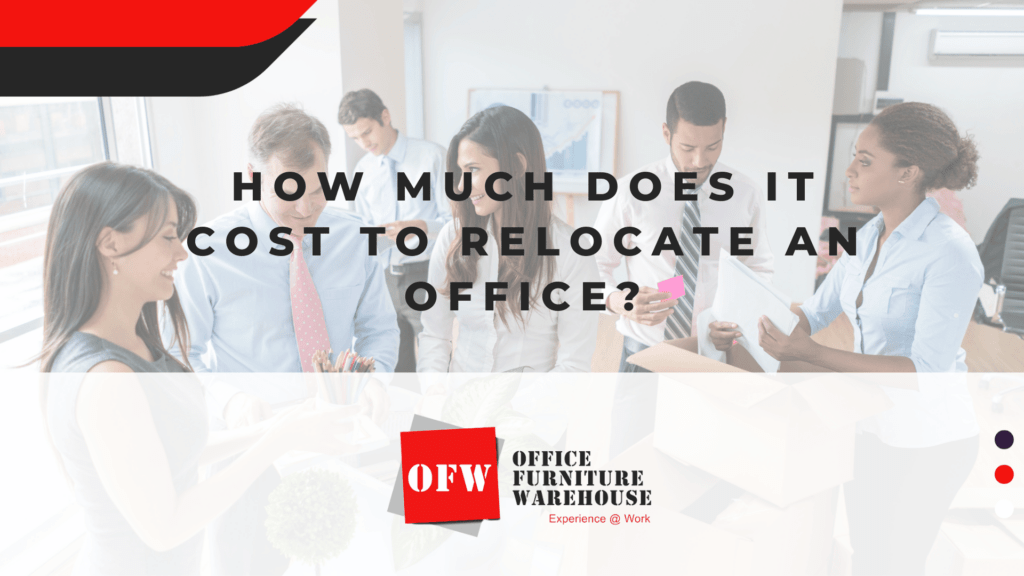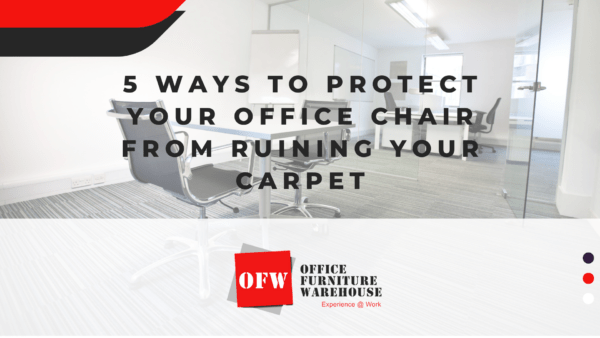How Much Does It Cost To Relocate an Office?

As a business owner looking to relocate, one of the most pressing questions that arise during the planning phase is: How much does it cost to relocate an office? Moving your business to a new location can have a profound impact on its operations, productivity, and overall growth trajectory. However, amidst the excitement and anticipation, it is important to recognize the various factors that come into play, especially the financial aspect.
Gaining an understanding of both the direct and indirect business relocation costs enables you to develop a realistic budget and allocate resources accordingly. This financial clarity will enable you to make informed decisions throughout the office relocation process, ensuring a smooth and efficient transition for your business and minimizing any unexpected financial burdens. Keep reading to find out more!
How Much Does It Cost To Relocate an Office?
There are two types of costs most business owners will incur during office relocation – direct and indirect costs.
1. Direct Costs
- Moving company charges. Hiring professional movers can range from $1,000 to $10,000, depending on the size of the office and the distance of the move.
- Lease termination or new lease costs. Costs associated with lease termination or signing a new lease can range from a few hundred dollars to several thousand dollars, depending on any penalties or security deposits involved.
- Packing and unpacking. If you choose to outsource packing and unpacking services, costs can range from $500 to $3,000 or more, depending on the size of the office and the amount of items to be packed.
- IT infrastructure setup. Setting up computer networks, telephone lines, and other IT systems can cost anywhere from $5,000 to $50,000 or more, depending on the complexity of the infrastructure and any additional requirements.
2. Indirect Costs
- Downtime and productivity loss. A temporary decrease in productivity can result in lost revenue or additional expenses. The extent of these costs varies greatly depending on the nature of the business and the duration of the relocation.
- Employee relocation expenses. Costs associated with moving employees’ personal belongings, temporary accommodation, and other relocation benefits can range from a few thousand dollars to tens of thousands of dollars, depending on the number of employees and the distance of the move.
- Furniture and equipment upgrades. Costs for upgrading or replacing furniture and equipment can vary significantly depending on the scope of the upgrades and the quality of the items being purchased. Estimates can range from a few thousand dollars to tens of thousands of dollars.
Factors Affecting the Cost of Office Relocation
When it comes to accounting for office relocation costs, several key factors can significantly influence the overall expenses involved.
1. Size and location of the new office
Larger office spaces typically require more resources for packing, transportation, and setup. Also, the location of the new office can affect the cost due to factors such as accessibility, availability of moving services, and potential parking or logistical challenges.
2. Distance to be covered
The distance between the current office and the new location is another significant factor that affects the cost of office relocation. Longer distances may require additional transportation expenses, fuel costs, and potentially overnight accommodations for the moving crew. You should consider the distance and plan accordingly to estimate transportation costs accurately.
3. Number of employees
More employees typically mean more furniture, equipment, and personal belongings that need to be packed and transported. Larger teams may also require more extensive coordination and planning, potentially leading to increased costs for project management and communication efforts.
4. Complexity of IT infrastructure
If your office relies heavily on technology and has complex IT infrastructure, such as servers, specialized equipment, or data centers, the complexity of relocating the IT infrastructure can significantly impact the cost. It may involve the services of IT professionals to ensure a seamless transition, including disconnecting and reconnecting computer systems, setting up networks, and transferring data.
5. Specialized equipment or furniture requirements
If your office requires specialized equipment or furniture, such as heavy machinery, sensitive laboratory equipment, or custom-built workstations, the relocation cost may increase. Specialized equipment often requires additional handling, packaging, and transportation arrangements to ensure its safe and secure transfer.
How Do You Plan an Office Relocation?
Here are tips that will help you to carefully plan an office relocation:
1. Conduct a needs assessment
Start by conducting a thorough needs assessment to understand your current and future requirements. Evaluate factors such as office space capacity, infrastructure, location, accessibility, and amenities. This assessment will help you determine the criteria for selecting a new office space that aligns with your business objectives and the guidelines outlined in your office move policy.
2. Create a timeline
Develop a detailed timeline that outlines the various stages of the relocation process. Consider factors such as finding a new space, lease negotiations, notifying stakeholders, and coordinating the physical move. Incorporate the guidelines from your office move policy to ensure a structured and efficient transition. Account for potential downtime during the move and plan accordingly to minimize disruptions.
3. Select a new office space
Research and evaluate potential office spaces that meet your criteria and align with your office move policy. Consider factors such as location, size, layout, lease terms, and cost. Conduct site visits to assess the suitability of each space. Once you have chosen a space, negotiate the lease terms and finalize the agreement, ensuring compliance with your office move policy.
4. Coordinate with vendors and service providers
Engage with professional vendors and service providers who specialize in office relocations. Then, share your relocation timeline and requirements with them. You can also collaborate with moving companies, IT professionals, furniture providers, and utility service providers to ensure a coordinated and efficient transition.
5. Communicate with staff members
Transparent communication with your employees is crucial throughout the relocation process. Communicate the reasons behind the move, expectations from employees, and any guidelines or procedures they need to follow. Keep them updated on the timeline, new office details, and their roles in the transition.
Final Thoughts
Office relocation costs can vary greatly depending on factors such as the size of the office and the distance of the move. Thorough planning and budgeting are important to avoid unexpected financial burdens.
Before going ahead to relocate your office, it is recommended to obtain accurate estimates from professional moving and relocation companies to make better decisions.
We at Office Furniture Warehouse offer exceptional office furniture moving and relocation services throughout South Florida. With a mission to provide the highest quality of installation and delivery services, our team consists of experienced and knowledgeable installers and technicians who have worked together for over a decade. Contact us today to learn more about our services.






